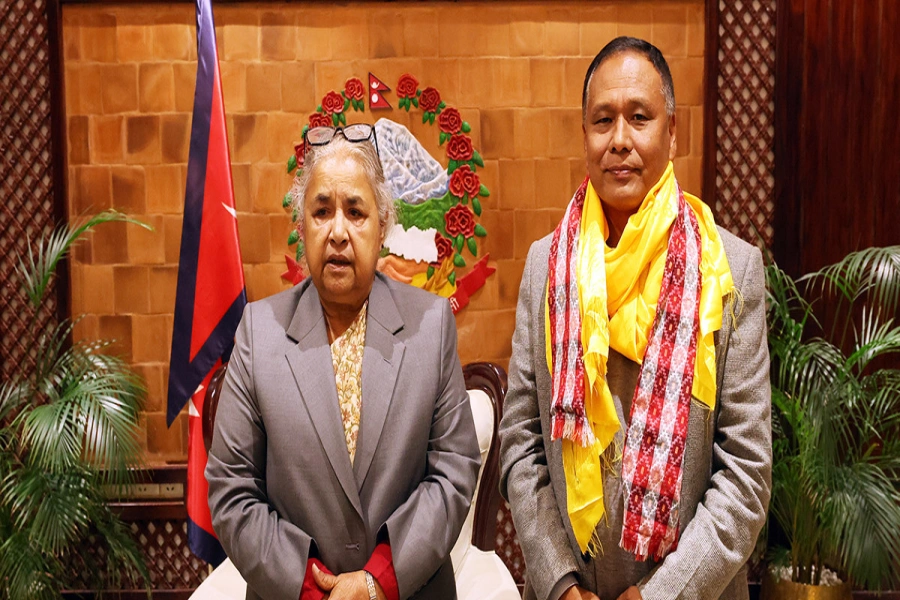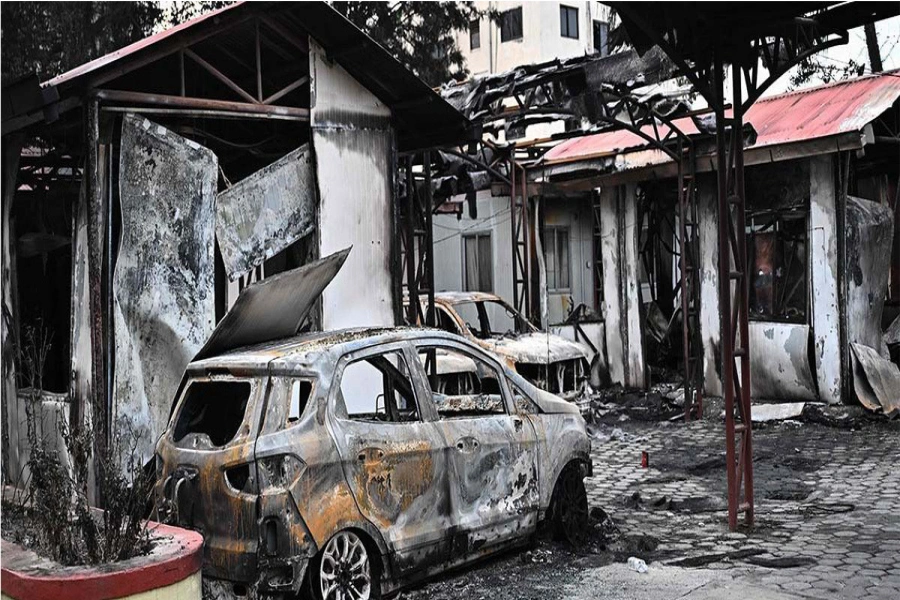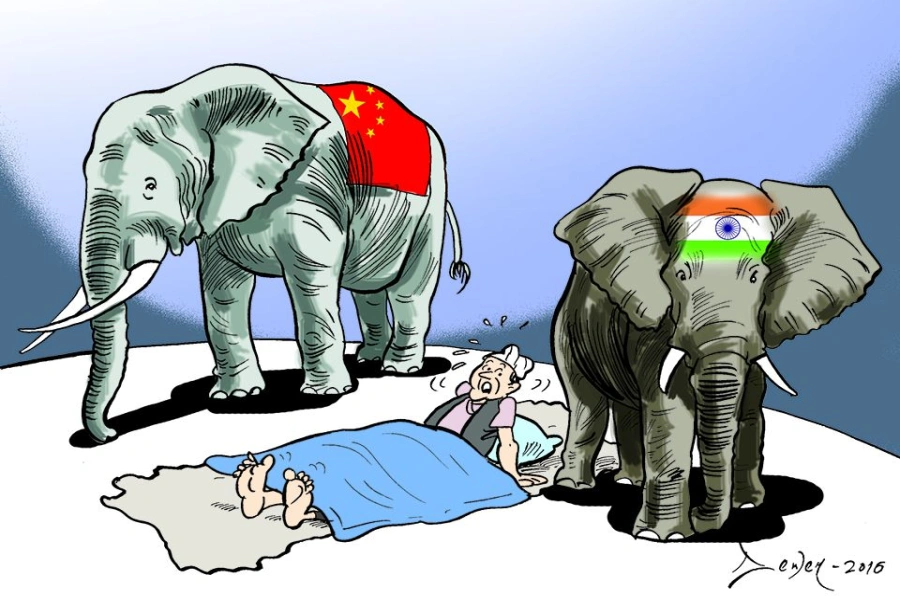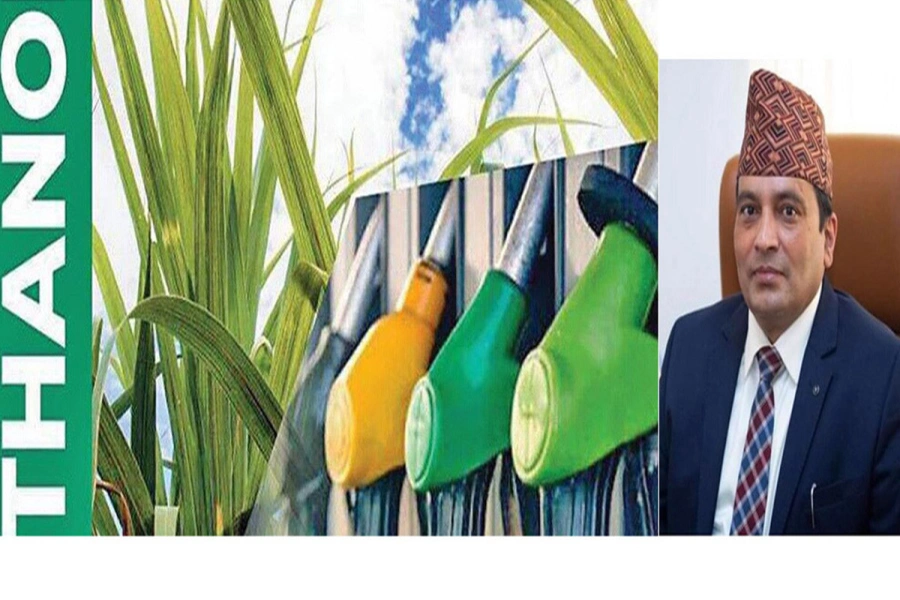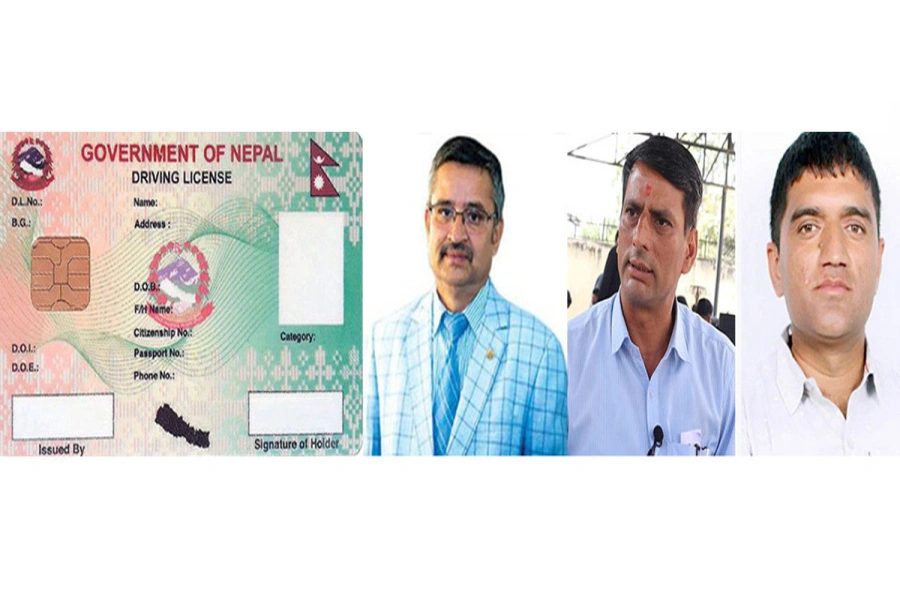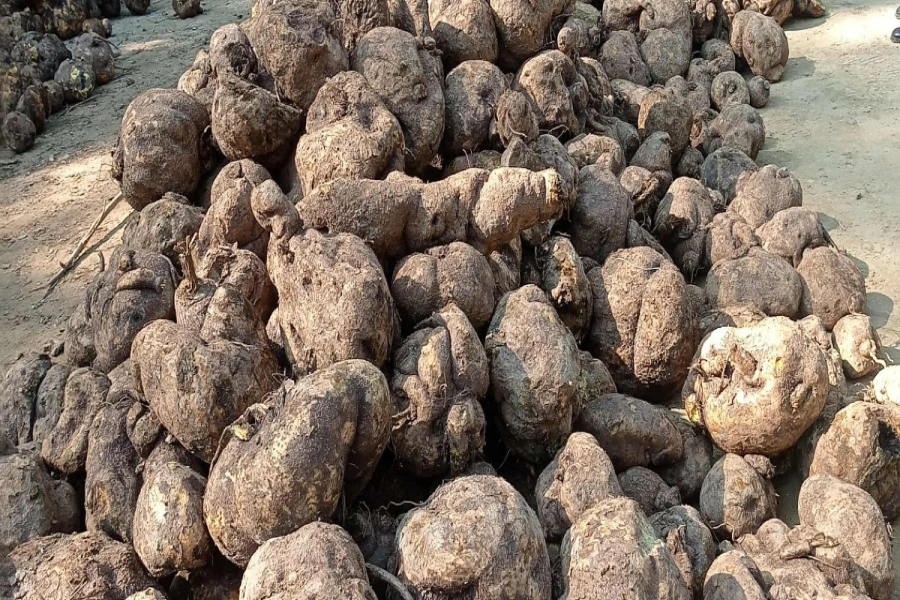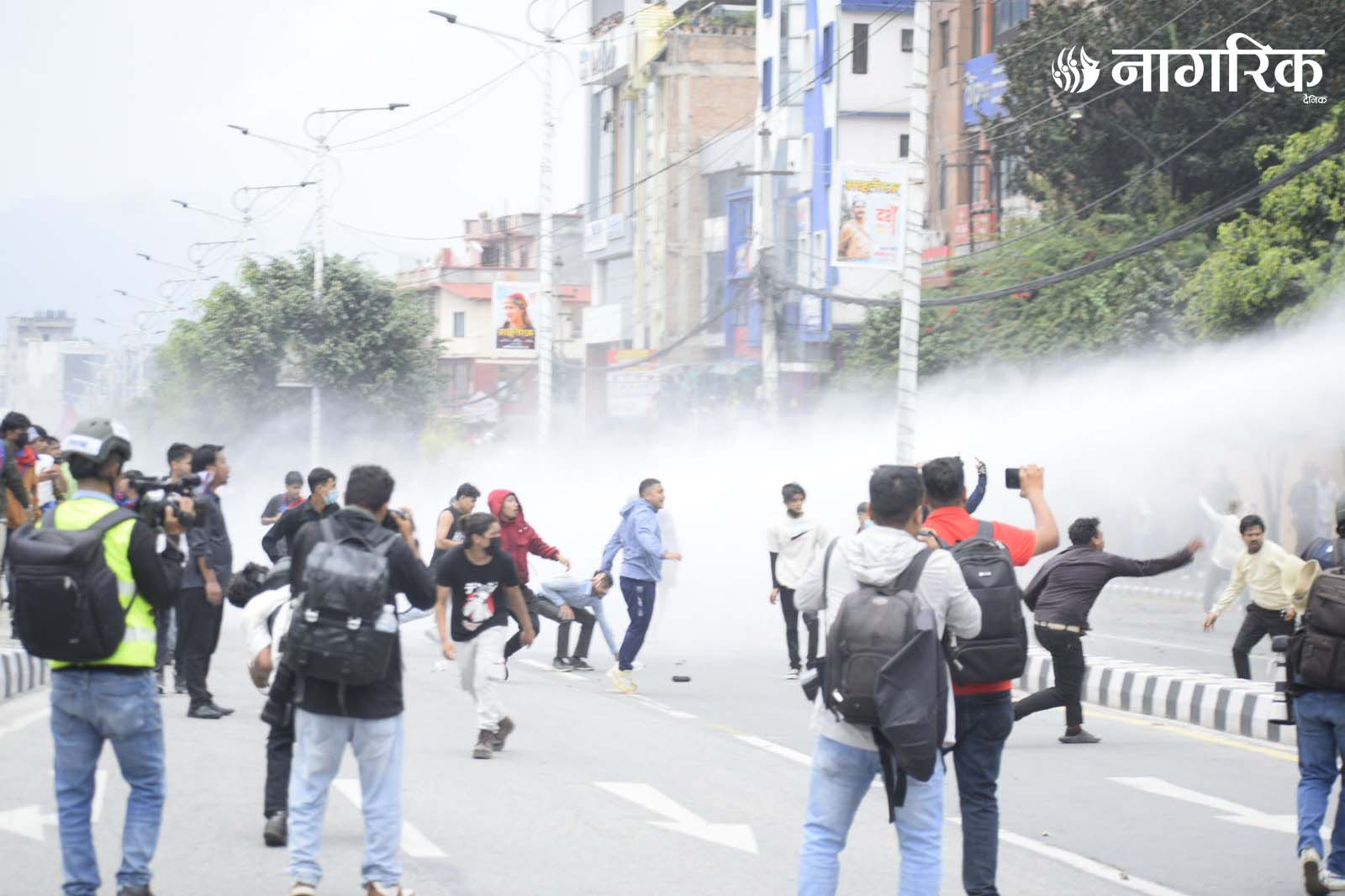The first edition of the Sagarmatha Sambaad – the foreign ministry's flagship dialogue initiative – kicks off in Kathmandu today (16th May). The three-day summit will focus on the existential issue of our time – Climate Change, Mountains and the Future of Humanity. This could be taken as an opportunity to separate the Himalayas from revenue generation activities.
The Himalayas have the most extensive ice reserve outside the Polar Regions, with over a billion people in the downstream basins, such as, Brahmaputra, Ganges and the Indus depending entirely on their waters for drinking, irrigation, and hydroelectric energy. The glaciers in the Himalayas are rapidly retreating, and the volume of ice is declining at a striking rate. For instance, the mean annual temperature in the Nepal Himalayas is rising at a rate of 0.06℃, which is higher than the global average, and such rate is expected to increase even more in the future. On the one hand, this has increased the number and size of glacial lakes at the foothills of glaciers, which have exacerbated the infrequent yet high-magnitude hazards like glacial lake outburst floods (GLOF). On the other hand, the flow modulation of rivulets and the large river systems are greatly affected as they maneuver immense amounts of water during the monsoon season and carry deficit flow during the dry season. In addition, other types of glacier hazards like snow and rock avalanches are also increasing due to sudden fluctuations in the snowfall, permafrost degradation, and changing freezing-thawing cycles, which have claimed lives of several mountaineers in the recent years. Specifically, GLOFs from moraine dammed glacial lakes pose significant threat to down-lying communities and infrastructure in the Nepali Himalayas and are responsible for numerous casualties and economic losses.
Impact of climate change on glaciers
Nepal Army drains 3 mile-high glacial lake

Nepal is witnessing accelerated glacier recession, with a 24% reduction in total glacier area and a 29% loss in ice reserve between 1977 and 2010. Despite the shrinkage in glaciers, the total number of glaciers increased from 3,429 in 1977 to 3,808 in 2010 - as a result of glacier fragmentation. To put it simply, the glaciers in Nepal are shrinking at an average rate of 38 km2 per year, given the increasing temperature and decreasing precipitation trend. All the glaciers situated in several mountainous regions like Everest, Dhaulagiri, Langtang, and Kanchanjunga are facing colossal impacts of climate change, and are retreating at a rapid rate. Remarkably, if the glaciers continue to retreat in the same way, some glaciers like Yala (located in the Langtang region) are predicted to completely vanish by 2040. Glaciers in Nepal have multifaceted roles like modulating river flow, supplying freshwater, balancing ecosystems, and influencing the climatic and local weather patterns. However, rapidly shrinking glaciers, in the context of climate change, may lead to problems like water scarcity for drinking and hydropower plants, disruption to local ecosystem, and increased risks of cryospheric hazards like avalanches and GLOFs.
Glacial lakes viz-a-viz GLOF risks
It is estimated that Nepal has over 2,000 glacial lakes with an area ≥ 0.003 km2. On average, between 1987 and 2017, the glacial lakes in Nepal expanded at the rate of 0.83% per year, which is higher than that of entire Himalayas (0.56% per year, 1990–2015), due to glacier shrinkage. In 2020, a joint study by ICIMOD and UNDP identified and mapped 3,579 glacial lakes (≥ 0.003 km²) in the inner and transboundary Gandaki, Karnali, and Koshi River basins, which extend across the Tibet Autonomous Region of China, Nepal, and India. . Among others, moraine-dammed glacial lakes were estimated to have the highest number (1,065), followed by other lakes. The Koshi Basin had the highest number of lakes (2,064) compared to other basins. The same study also identified 21 potentially dangerous glacial lakes (PDGLs) in Nepal, which could be potential sources of future GLOFs. Apart from glacial lakes within Nepal’s territory, our country is also threatened by those lakes located at the headwaters of the Chinese Himalayas. At least 32 such lakes (area ≥ 0.1 km2) are near the China-Nepal border and primarily concentrated along the Eastern Himalayas. Recent quantitative risk assessment studies along the China-Nepal transnational corridor have concluded that if GLOFs of the worst magnitude occur in this region, they can be between three and ten times larger than normal seasonal floods and can damage about 3,000 buildings, 50 bridges, 10 hydropower plants, and about 50 km of roads. Due to the high vulnerability, most such damage is expected to concentrate on the Nepal’s side.
Glaciers, Glacial lakes: Nepal's untapped economic resource
Even though glaciers and glacial lakes are generally considered as signals of climate change or hazards only, they equally hold several other purposes and meanings. They cover socio-economic values, religious beliefs and tourism, and should also be considered opportunities. First, glaciers and glacial lakes are perennial water sources that predominantly modulate the downstream flow. Nonetheless, these vital resources are still untapped in Nepal and the surrounding Himalayas for irrigation and micro-hydroelectricity power plants. As freshwater availability is diminishing daily, much freshwater stored in the glaciers and glacial lakes should be carefully managed and used to solve the increasing water stress problem in Nepal and down-lying nations. Second, glacial lakes and associated glaciers often serve as significant pilgrimage sites. Both Hindu and Buddhist pilgrims identify glacial lakes as sacred places and seek for spiritual purification by taking holy bath into them. Moreover, the lakes and surrounding snow-capped mountains also offer natural beauty and enriched cultural experiences, providing serene views of stunning landscapes and a thrilling trekking experience through the indigenous communities for both the trekkers and pilgrims. Third, the glaciated regions hold a great tourism prospect for winter sports like skiing, skating, and snowboarding. The Andes and Alps regions have utilized such opportunities. Winter sports are still rare in the Nepal Himalayas. Therefore, private forums and institutions can be promoted or engaged to organize and manage similar sporting events in the alpine regions of Nepal, bringing in a large number of international sporting professionals and visitors. They can also be a sustainable source of revenue.
In this regard, the Sagarmatha Sambad, a multi-stakeholder dialogue forum initiated by the Government of Nepal (GON) to be held from May 16-18, 2025, can play a pivotal role to channelize Nepal’s efforts toward cryospheric monitoring, developing risk mitigation strategies, and ensuring sustainable development of the nation by utilizing these revenue generating aspects of glaciers and the glacial lakes. We need to leverage remote sensing techniques and build a wide network of in situ stations to build a comprehensive database on glacier dynamics, snow cover, and spatio-temporal evolution of glacial lakes. It is essential to integrate these data into advanced early warning systems to enable timely early warning systems (EWS) for avalanches and GLOFs and protect downstream communities. Additionally, employing suitable engineering measures, e.g., continuously monitoring lake levels & lowering them and reinforcing slopes/ moraine dams, can further mitigate the risk of these hazards. Through the Sagarmatha Sambaad, Nepal should attempt to promote international collaboration and advocate for climate justice for implementing these technologies and measures. By highlighting the potential as a sustainable source of freshwater, hydropower, and tourism, we should take the opportunity to tap into the economic potential of Nepal. Through these synergetic approaches, the Sagarmatha Sambaad can drive forward a resilient and prosperous future for Nepal’s cryospheric-dependent mountain communities.



